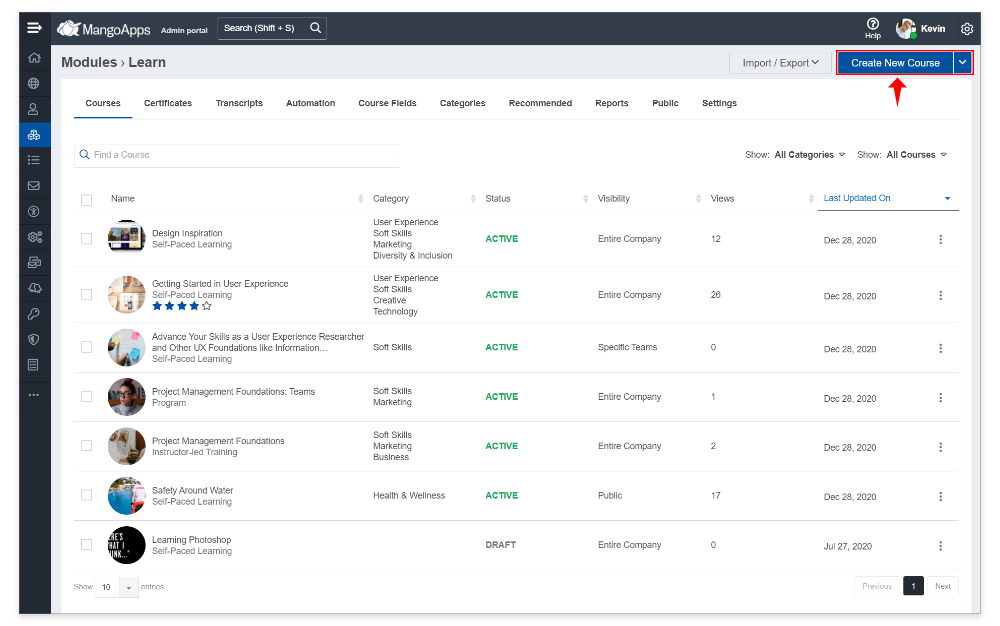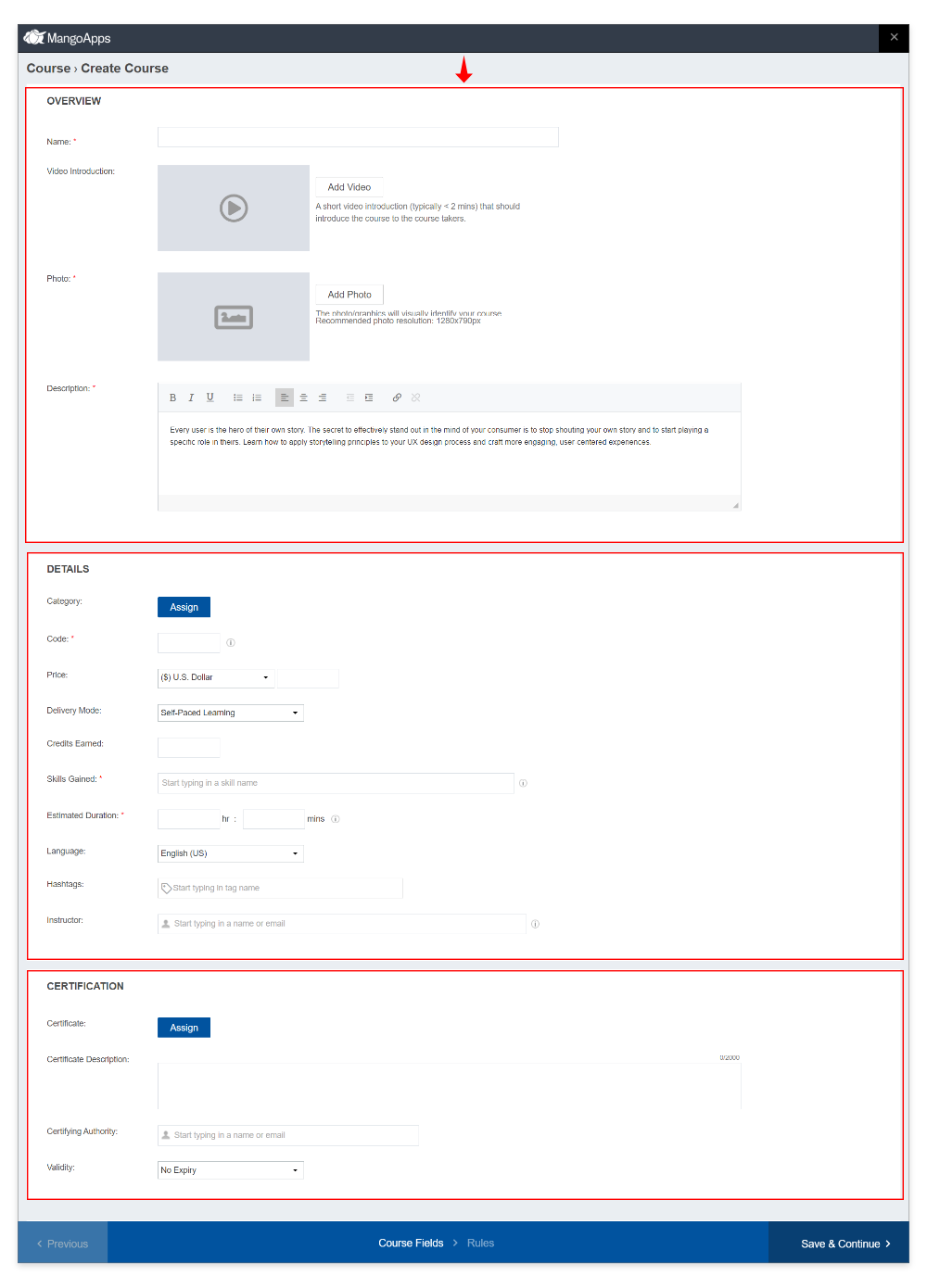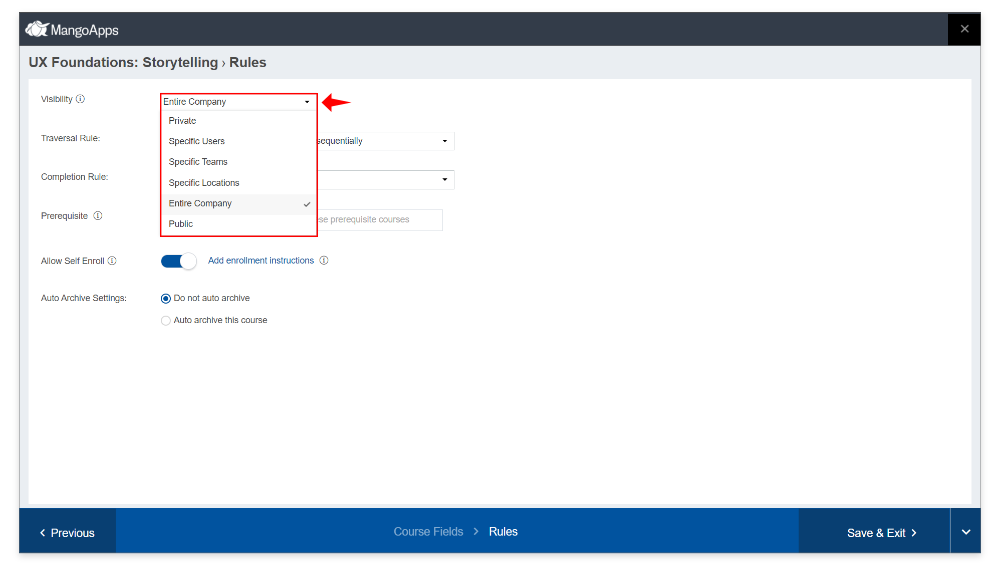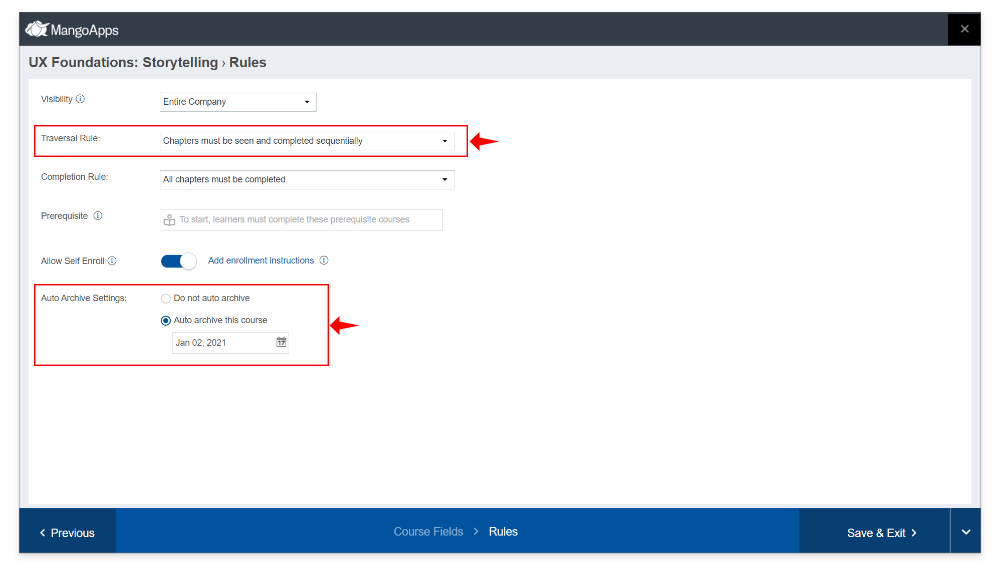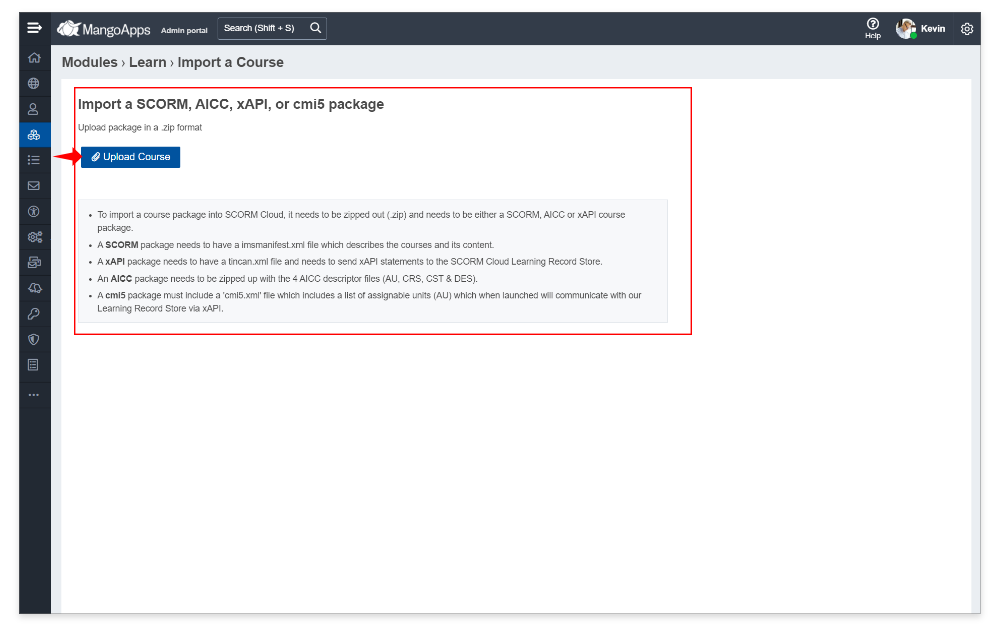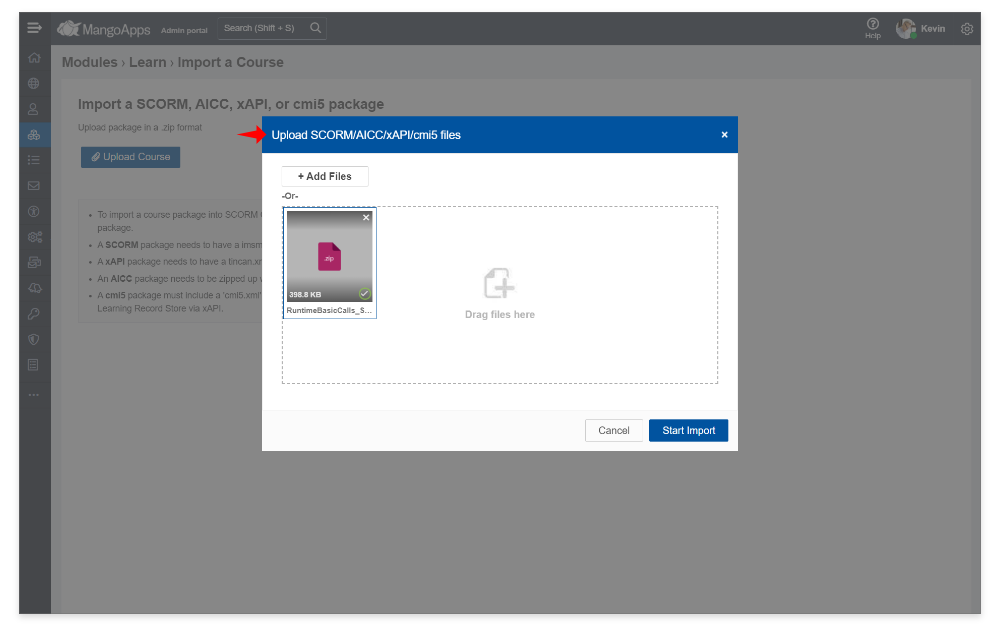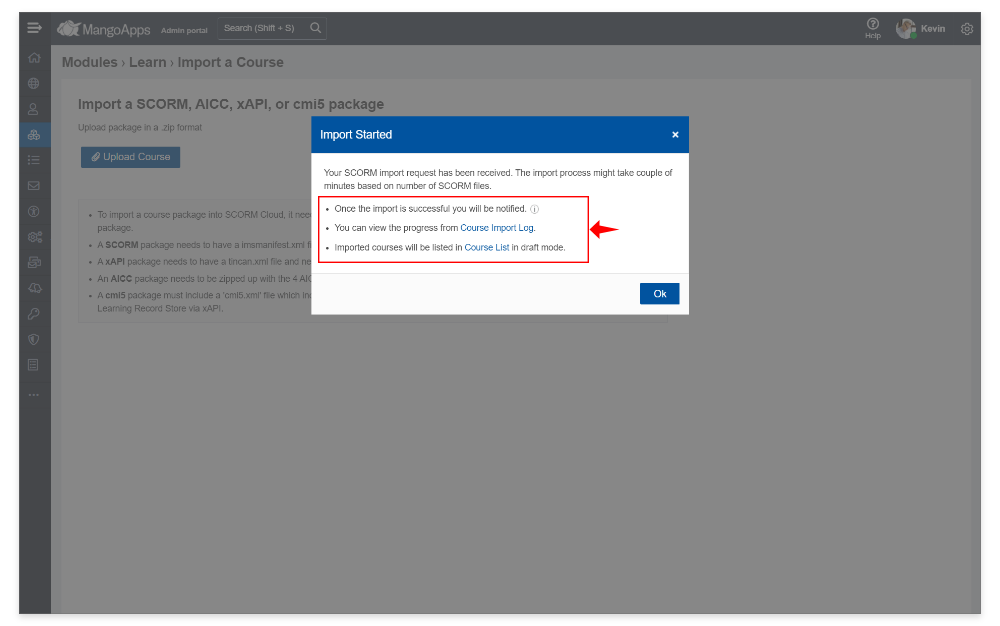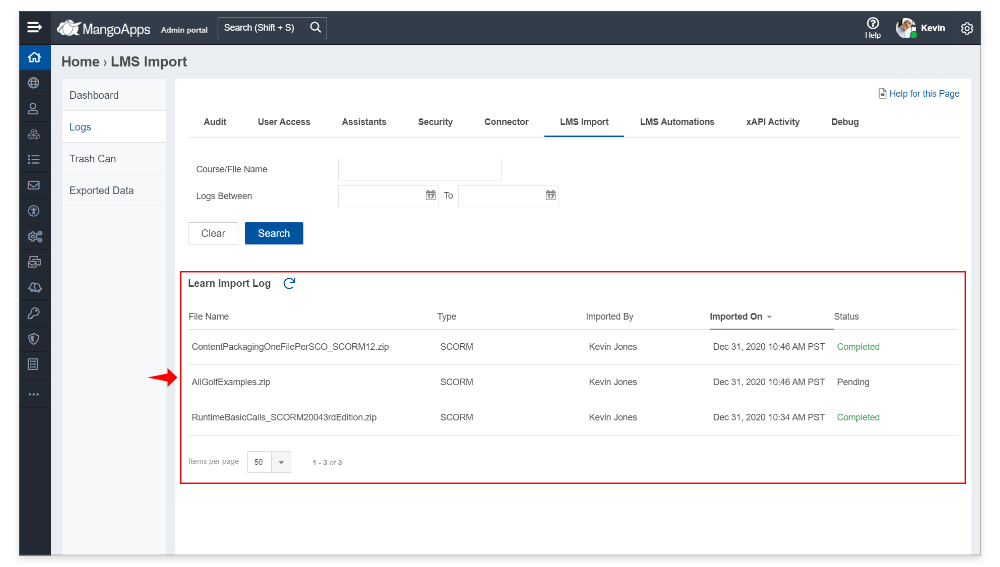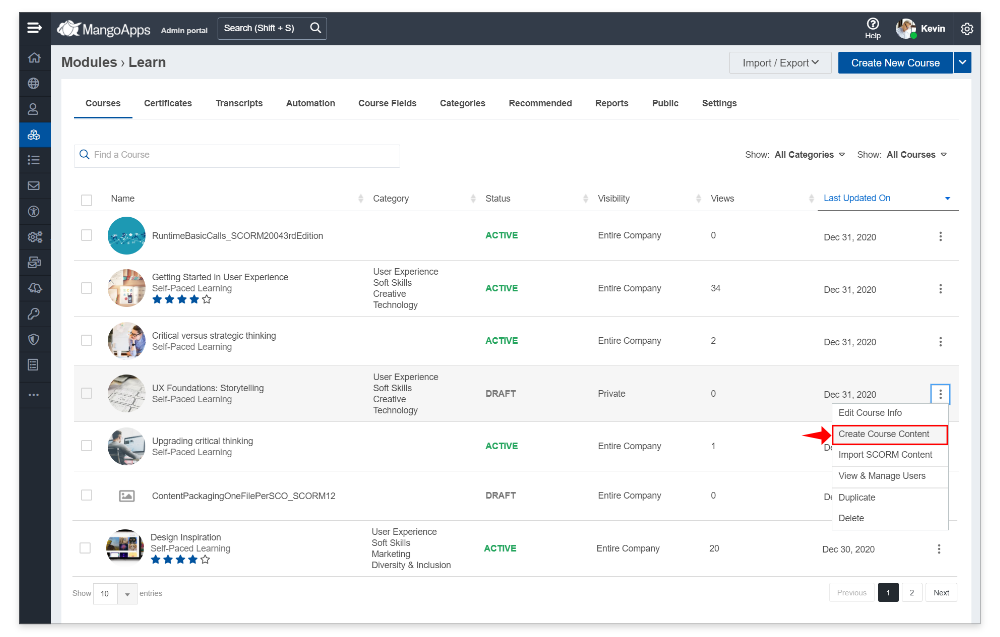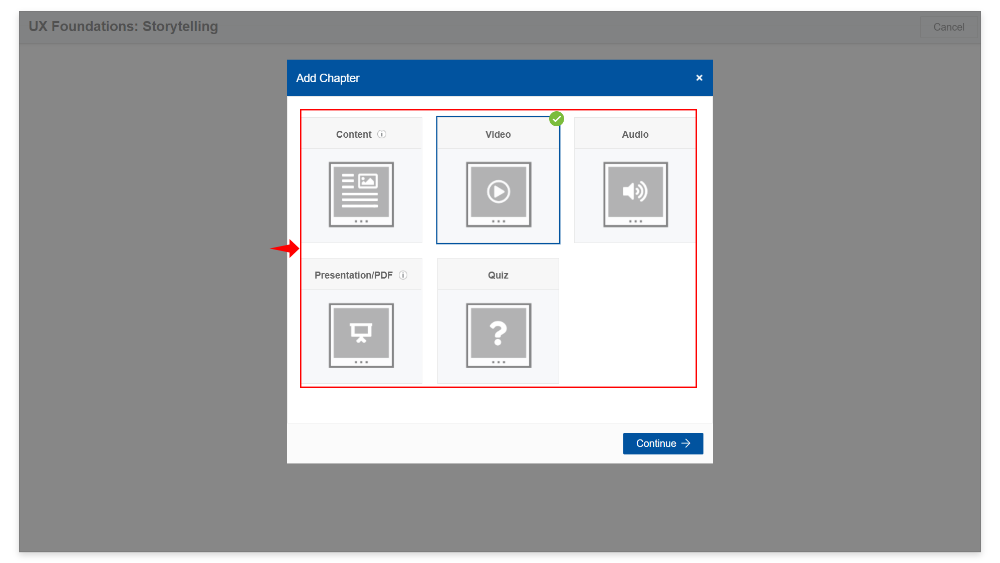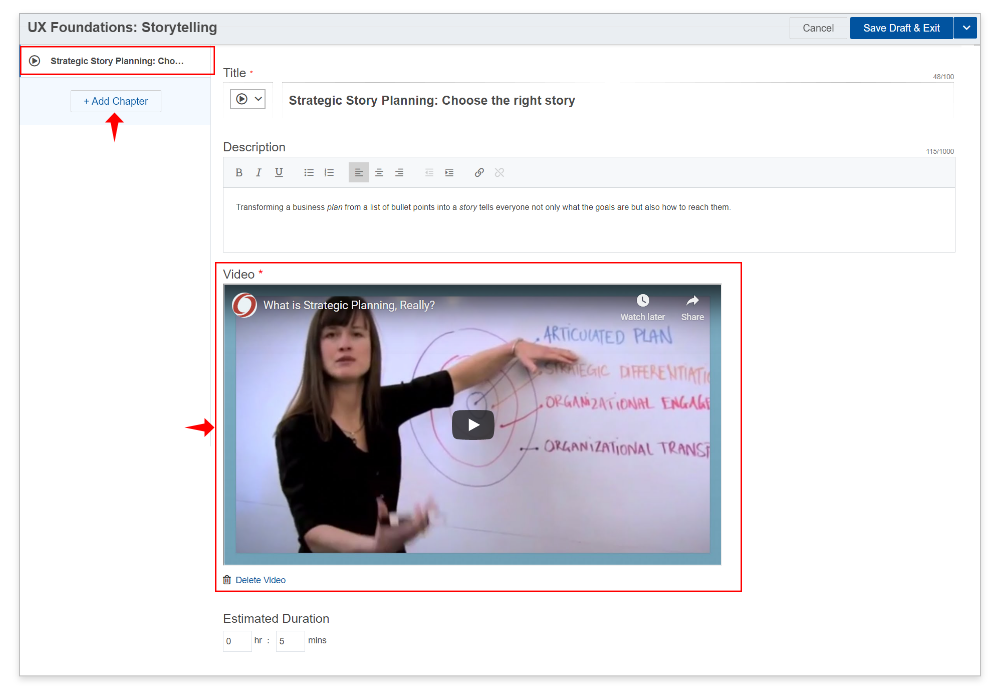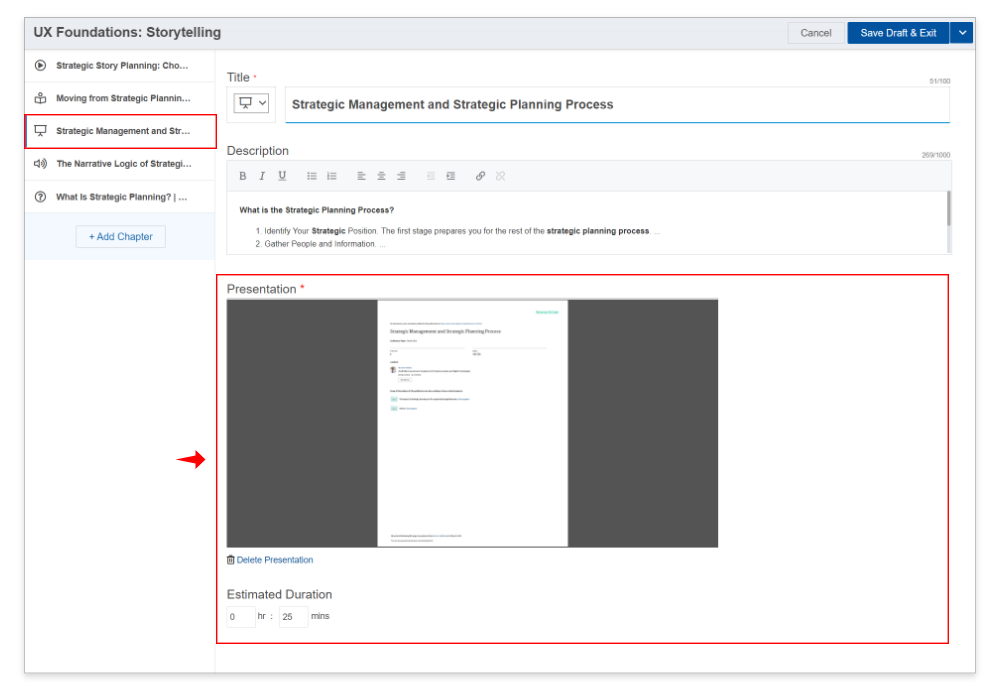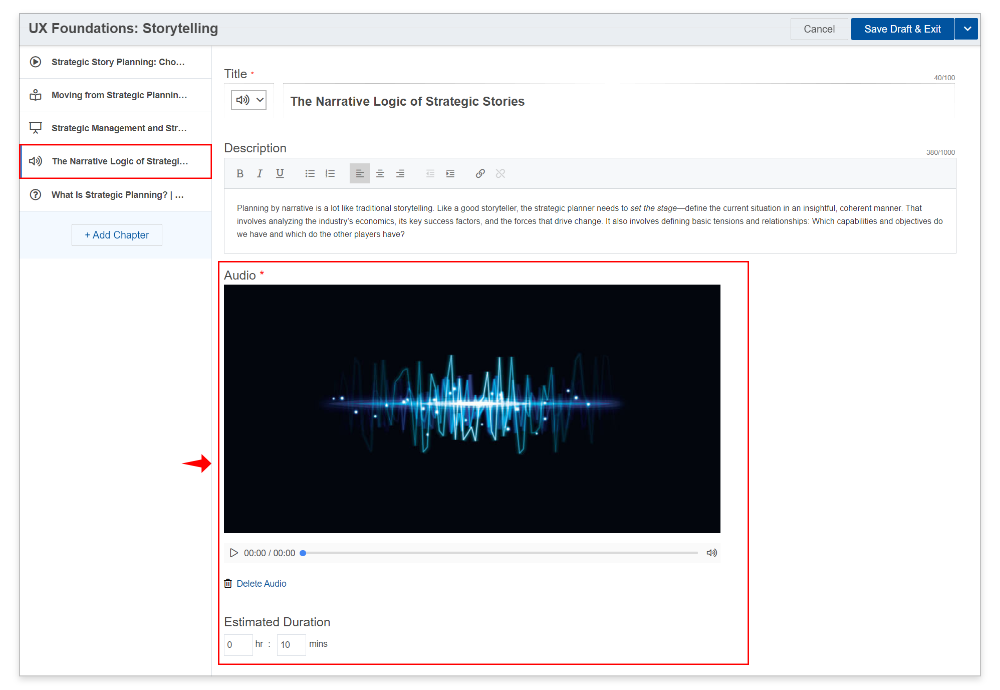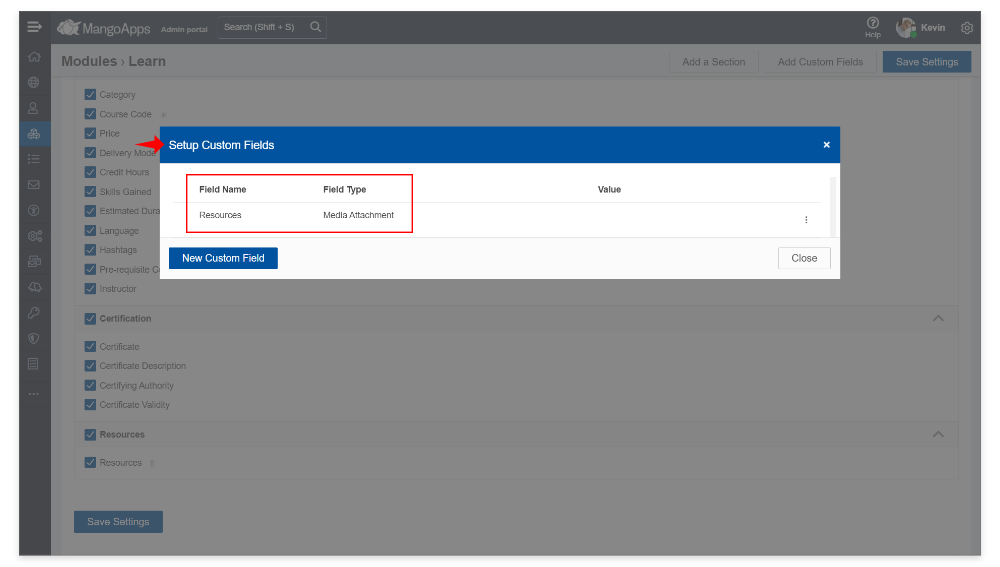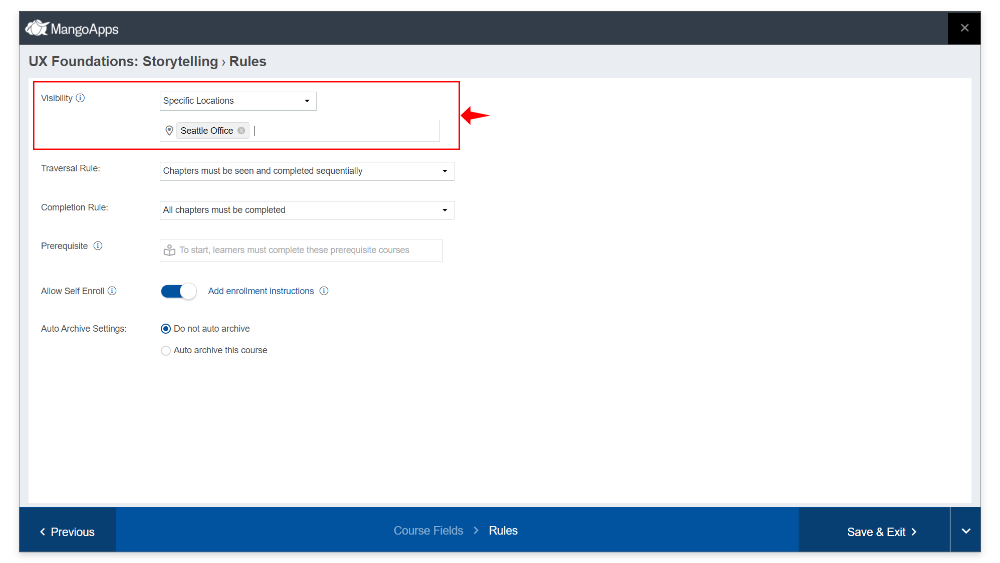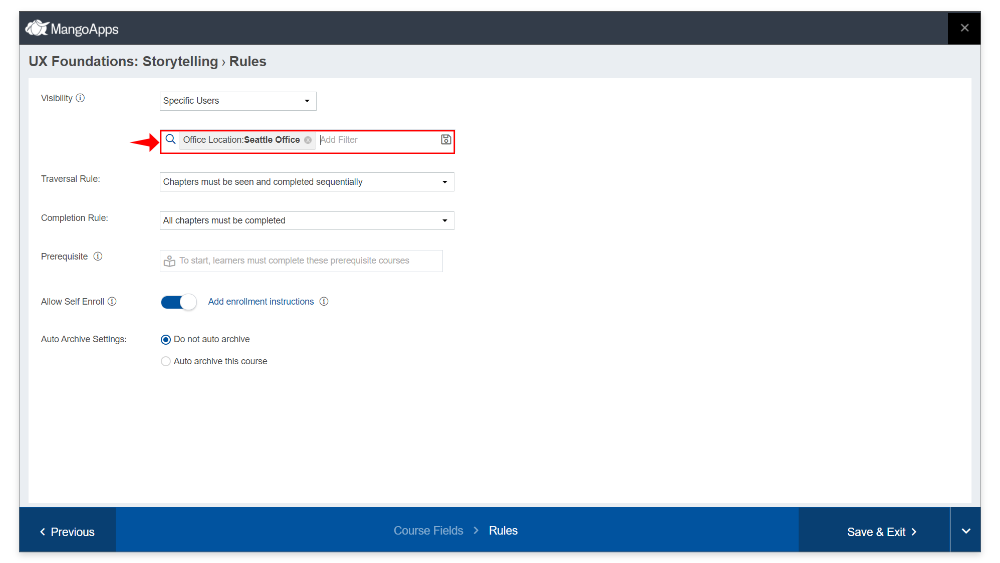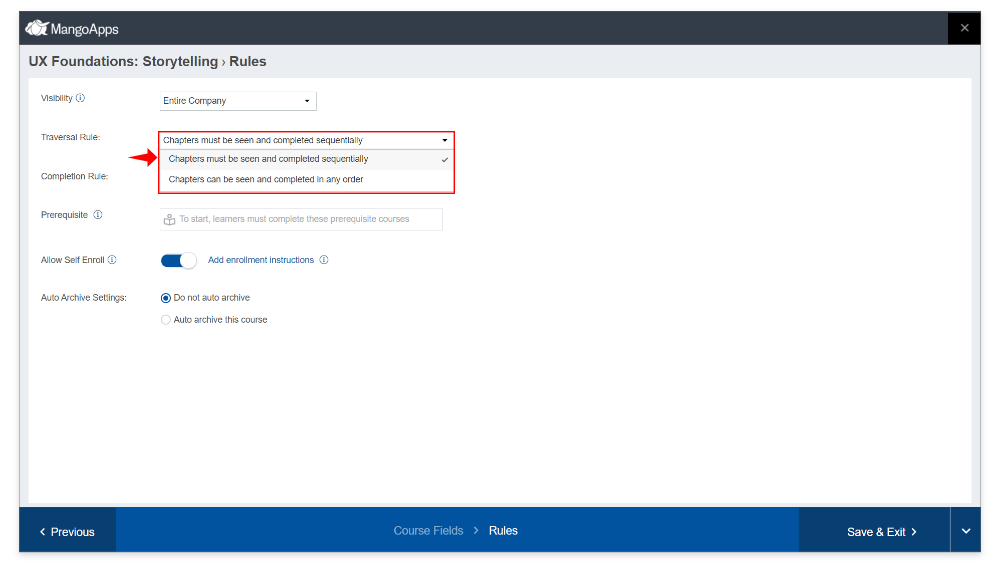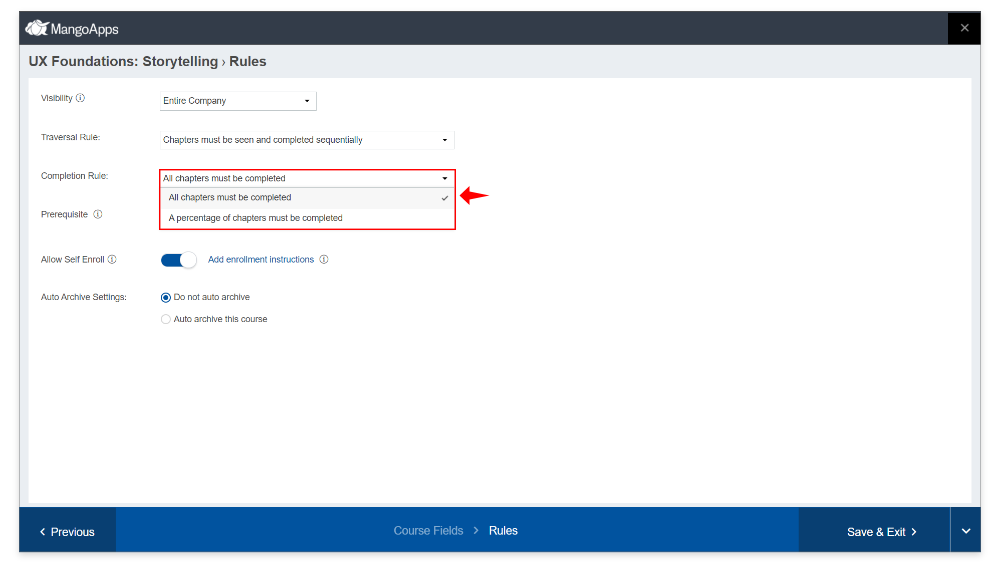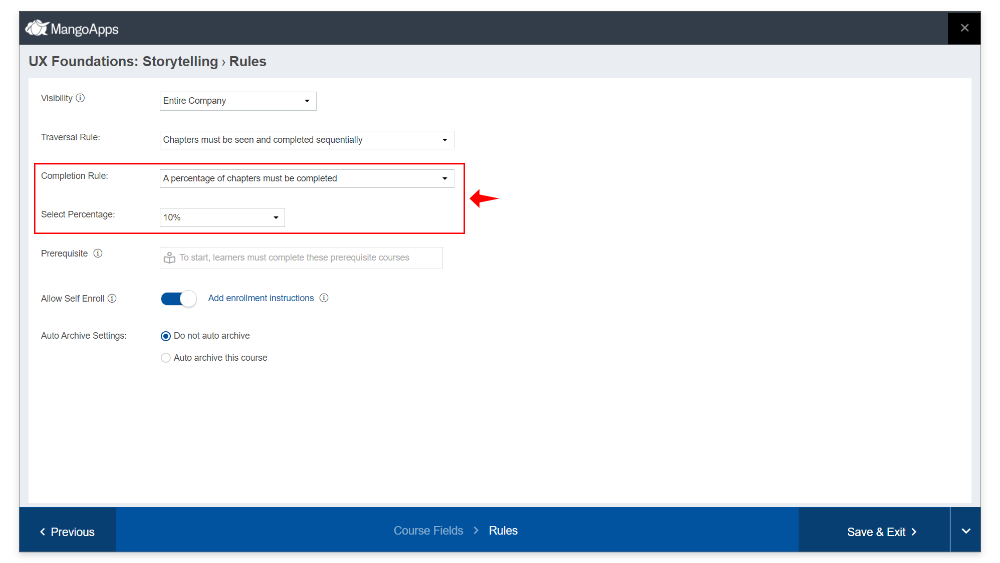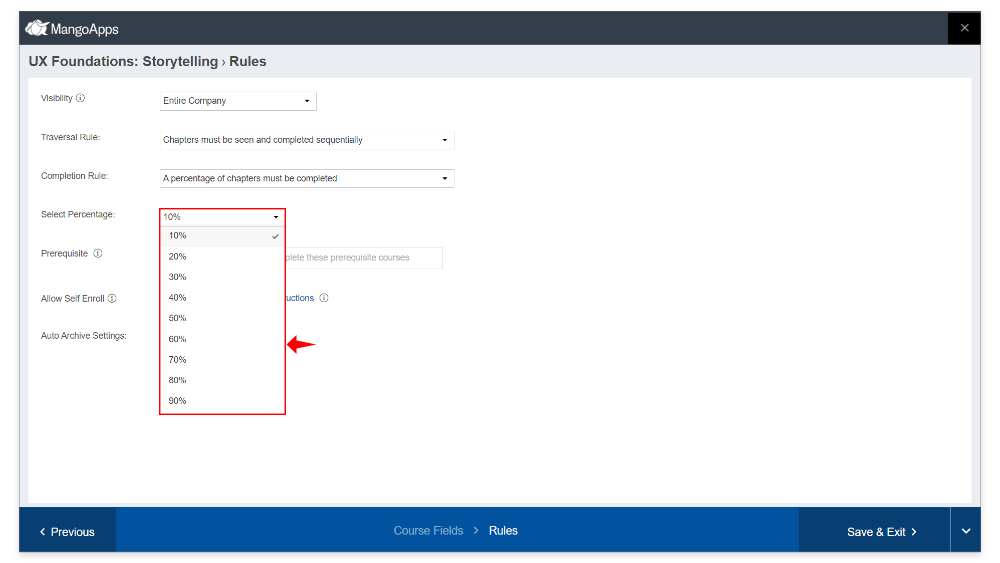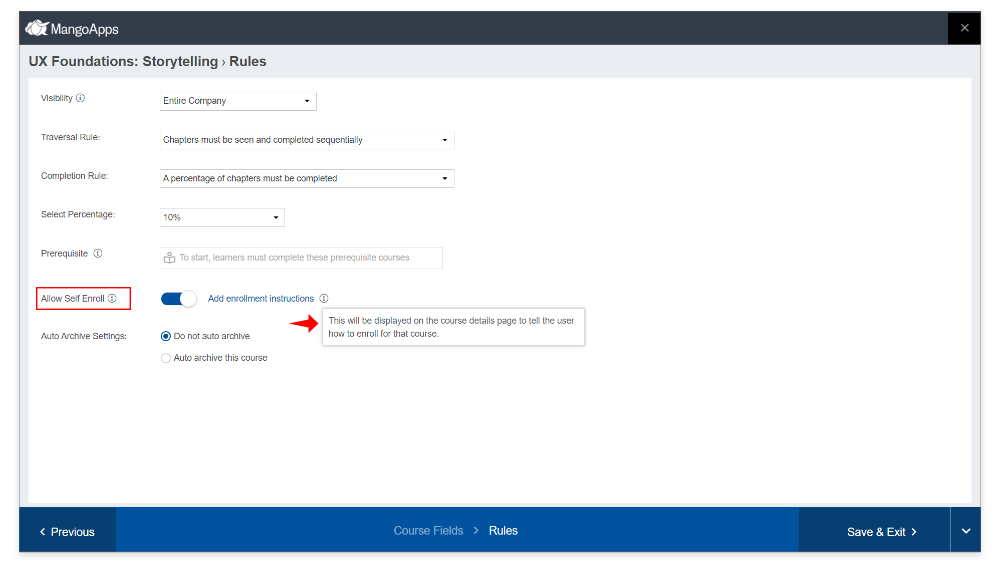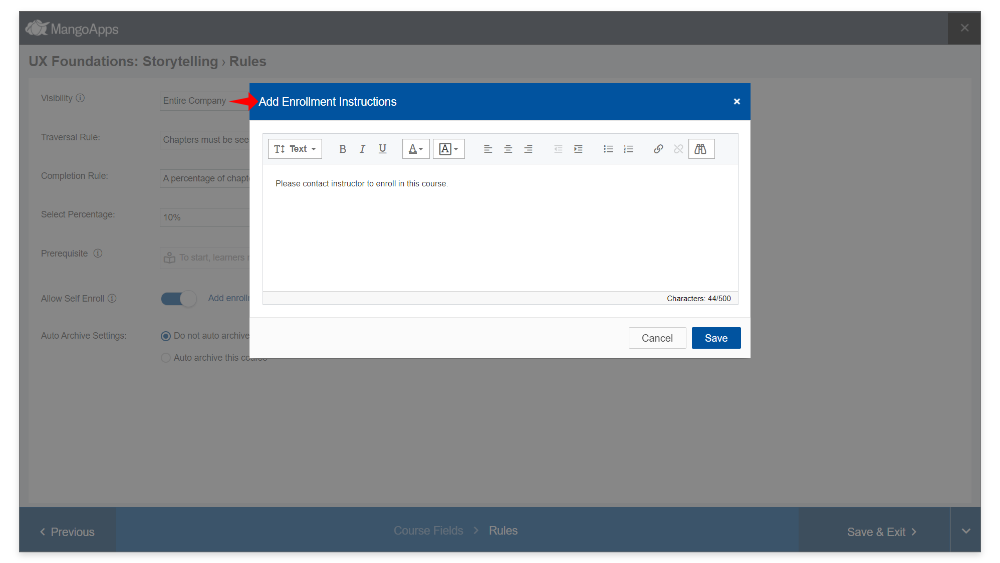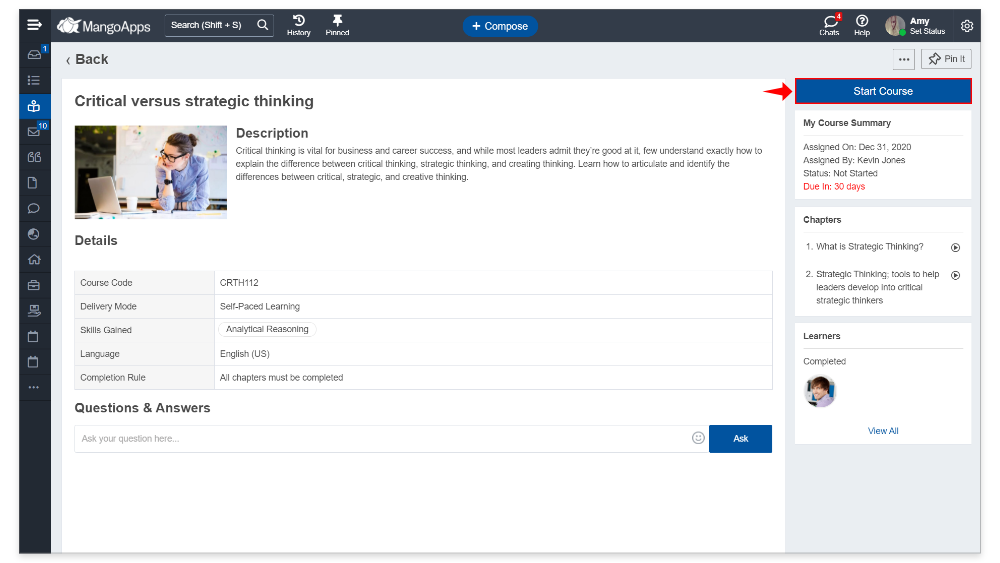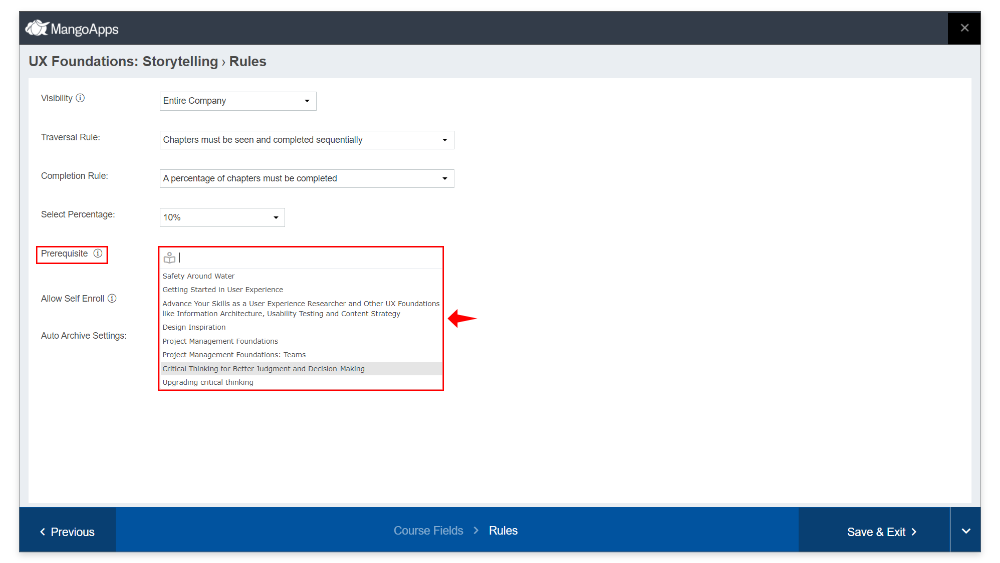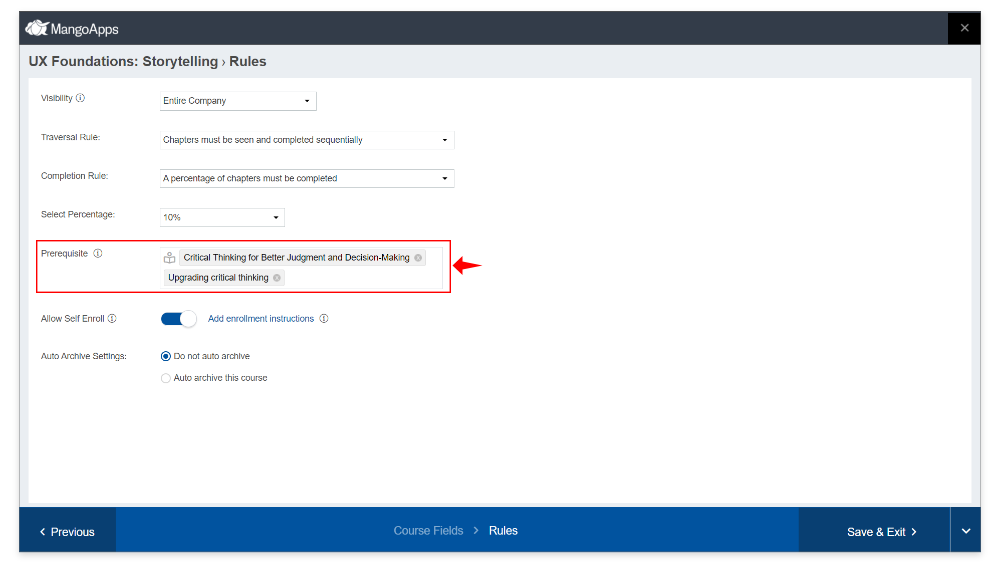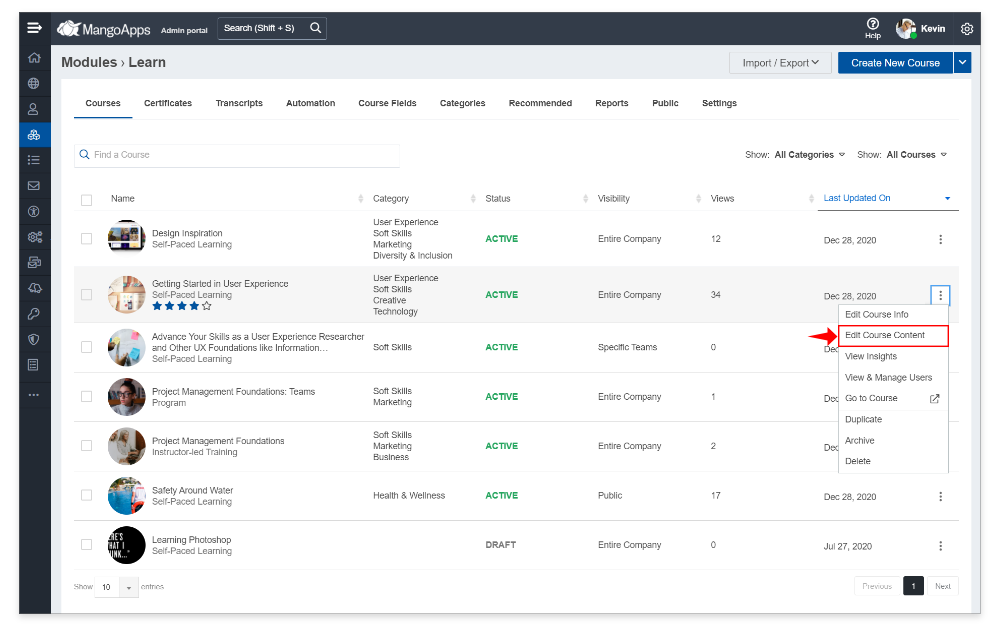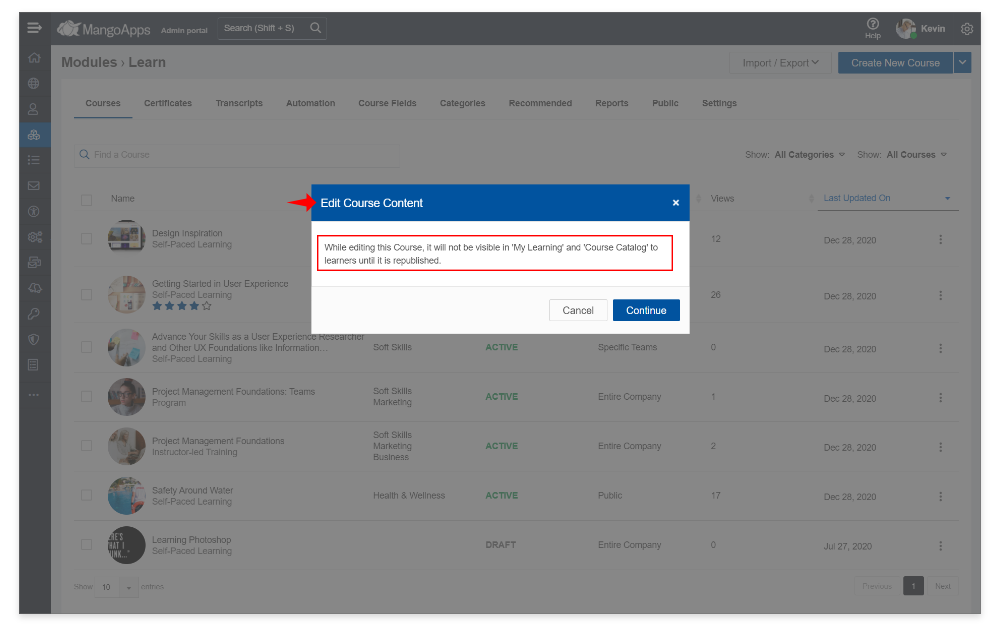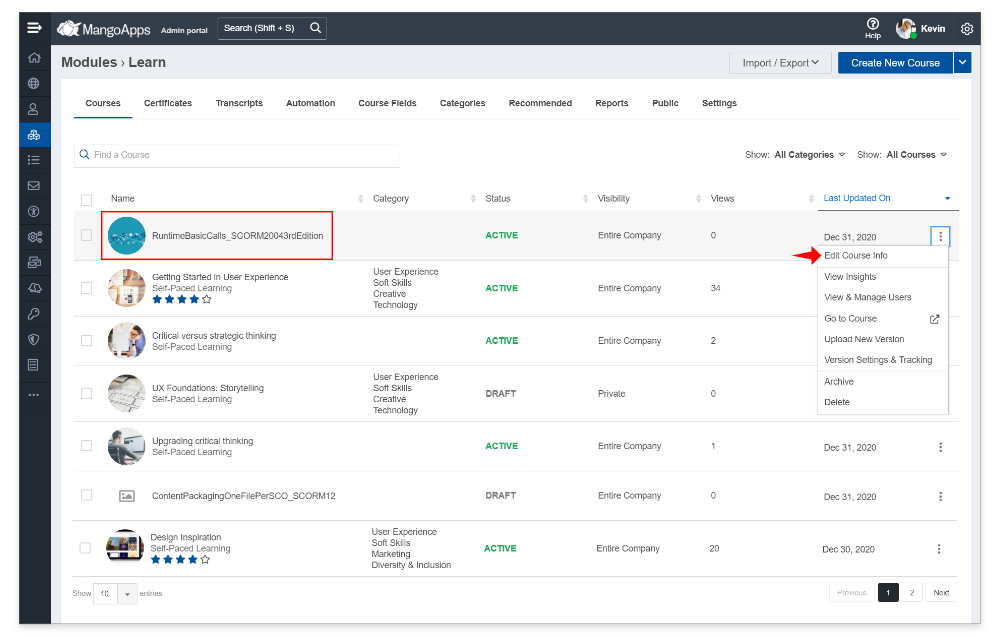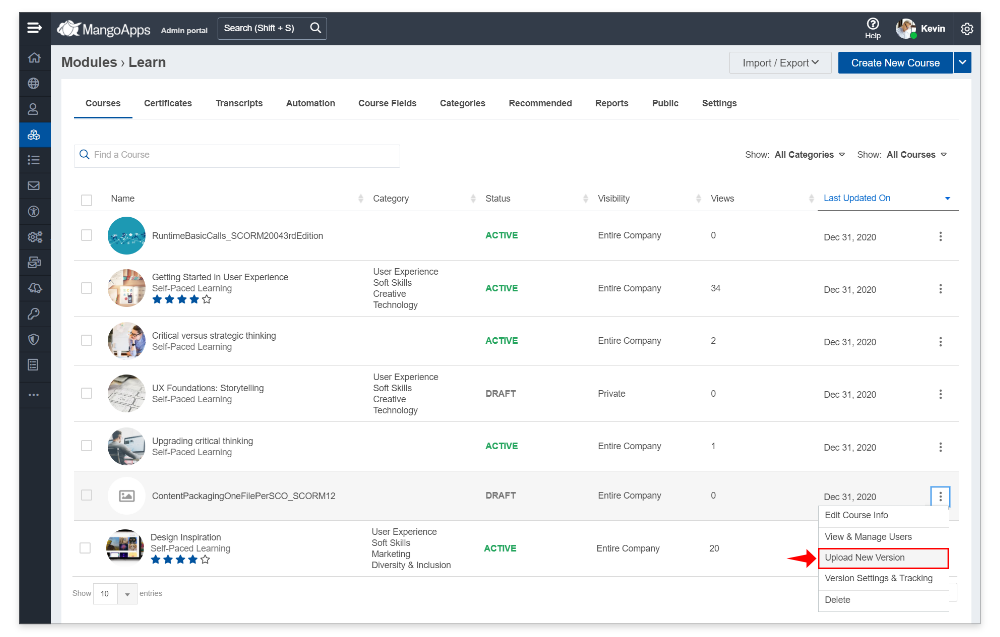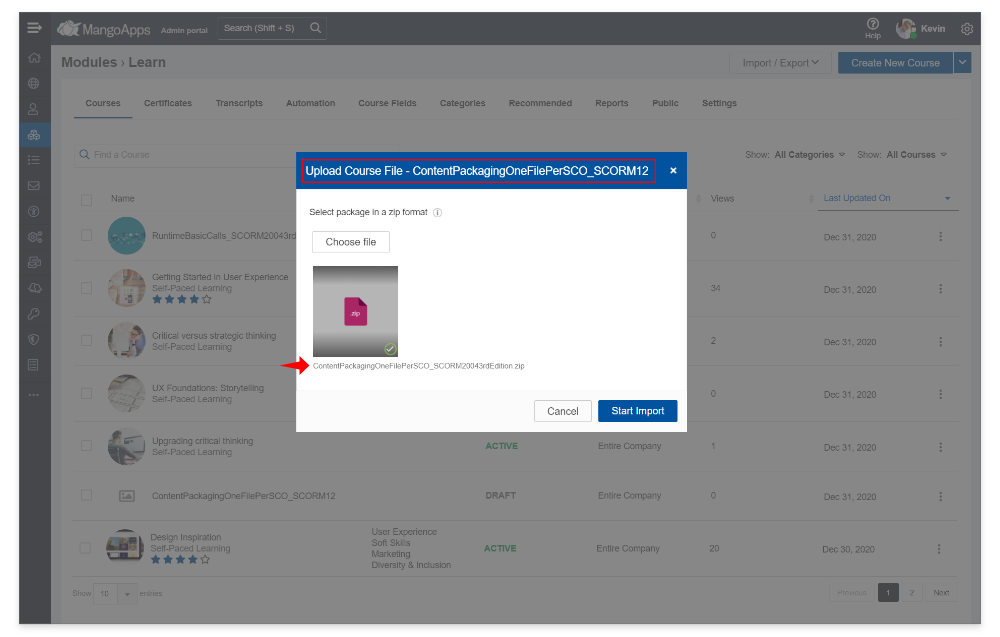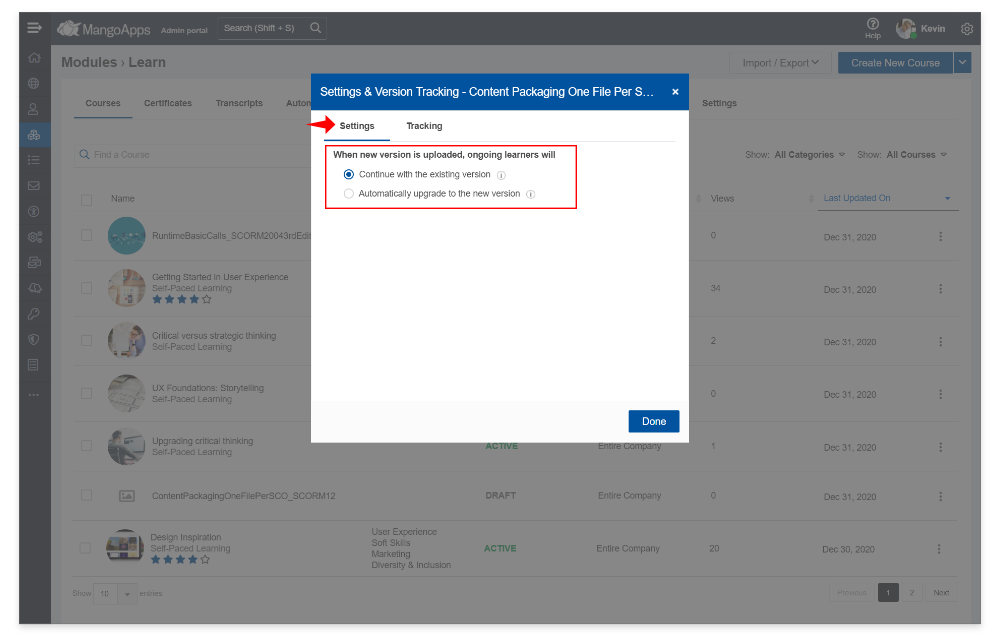Self-Paced Course Authoring & Management
Self-paced course allows users to learn in their own time and schedule. A learner doesn’t need to complete the same assignments or learn at the same time as others. A learner can proceed from one chapter to the next at their own speed.
-
Create a New Course
- Create a course by providing all the required & optional fields like title, video introduction, description, category, instructor, certificate and the custom fields that have been setup by your admin
- When creating a online course select delivery mode as “Self-Paced Learning”
- Use the video introduction to post an overview of the course
- Use the credit hours to specify the credits that the learner would earn on completion the course
- Use the certification fields to assign the certificate the user would get on completion of the course along with it’s validity
- Use the hashtags field to enter keywords for the course to make it easy to find the course using search
- Estimated duration will automatically get calculated after the chapters are added for self-paced learning
- Use the rules step to customize the experience for yours learners. This includes
- Traversal rule (more on this below)
- Completion rule (more on this below)
- Pre-requisite course (more on this below)
- Use the visibility field to decide which set of employees can see the course in the course catalog
- Use the auto-archive settings to automatically archive the course after X months/years (if needed)
-
Import SCORM / xAPI Content
- Ability to import SCORM 1.2, SCORM 2004, AICC, xAPI, cmi5 packages are supported in MangoApps
- There are two ways in MangoApps to add SCORM course content. These include
- Import the SCORM course package -or-
- Create a course info & then Upload SCORM package
- Under Domain > Logs, the LMS Import logs capture every SCORM course import success & failure info for your domain
-
Self-Paced Video, Audio, Presentation & Web Content Chapters
- Following types of chapters can be authored in MangoApps
- Video type of chapter
- Presentation/PDF type of chapter
- Audio type of chapter
- Web content type of chapter
- Duplicate chapter
- Duplicate the chapter to quickly author courses
- Any type of the chapter can be duplicated
- The embed media is shared/referenced in the copied chapters
- Re-order chapter
- Ability to move chapters up & down is supported to make it easy to change the sequence of chapters in a course
- Any type of the chapter can be re-ordered
- De-activate chapter
- Deactivate a chapter keeps the content of the chapter but it is not shown to the learner when they take the course
- Any type of the chapter can be de-activated
- De-activated chapters can be moved up or down and also duplicated
- Ability to see a preview of the chapters as a learner is available
- Following types of chapters can be authored in MangoApps
-
Self-Paced Course Resources
- A course can have a resource section that allows LMS admins/instructors to share reading material with users to prepare for the course
- Resources section can include PDFs, videos and documents of any type
- Ability to view resources online and download is supported
-
Self-Paced Course Visibility & Access
- Courses support the following visibility values
- Private – The course is not visible in the course catalog. A link of this course is needed to see & take the course
- Specific Users – The course is visible in the course catalog only to the users who are added in the list
- Specific Teams – The course is visible in the learn module inside the listed teams and in the course catalog to the members of the listed teams
- Specific Locations – The course is visible in the course catalog to users who belong to the locations listed here
- Entire Company – The course is visible in the course catalog to everyone in the company
- Public – The course is visible to everyone on the internet and also to everyone in the company
- Visibility effectively controls who can view the course in the course catalog.
- The user may still be able to take the course if they are given a direct link to the course that they are able to access it (e.g., link to a course in public team that aren’t a member of) based on the auto-enrolment setting of the course
- Courses support the following visibility values
-
Self-Paced Course Traversal Rule
- Traversal rule determines how the learners will navigate the chapters in the course
- MangoApps supports 2 types of navigation using the traversal rule
- Open Navigation – Chapters can be seen and completed in any order by the learner
- Locked Navigation – Chapters must be seen and completed sequentially by the learner. This is the default.
-
Self-Paced Course Completion Rule
- Completion rule determines the minimum no. of chapters to be completed in order to complete the course
- MangoApps supports 2 types of completion rules
- All chapters must be completed by the learner. This is the default.
- A percentage of chapters if completed, the course will be considered complete for the learner. Chapter completion % can be set from 10% to 90% in slabs of 10%
-
Self-Paced Course Enrolment
-
- LMS admin/instructor can prevent users from enrolling in courses by themselves
- Ability to share instructions on how to take the course can be shared by the LMS admin/instructor
- When self-enrolment is turned off for a self-paced course, users will not see an action to start the course
-
Self-Paced Pre-requisite Courses
- One or more courses (Self-Paced, ILT) or curriculum can be set to be completed before starting the self-paced course
- This is an optional list and allows instructors to enforce a learning path for users
-
Self-Paced Learner Management
- Admin/Instructor can add users to the self-paced courses
- Learn more about learner administration & management here
-
Self-Paced Course Editing
- Editing of mango authored course
- Course info & course content can be edited at any time by the domain admin, instructor and designated learn module admins
- All the information in course info & content content for self-paced courses can be edited
- Delivery mode can’t be edited once the course has content added to it
- Editing a course that is already published will automatically hide it (temporarily) from the course catalog for the duration while it is being edited, to avoid learners to start or resume it while it is being edited. After the edit is complete the course will again automatically become available in the course catalog as before.
- Editing of imported/uploaded SCORM course
- Course info can be edited at any time
- Delivery mode can’t be edited once the course has content added to it
- Upload a new version of SCORM course package to get the new version of the course
- Ability to setup how the new version of SCORM course becomes effective for ongoing learners (New learners always get the latest version of the course)
- Reset the current progress and move the ongoing learners to start the new version of the course
- Keep the current progress and let the ongoing learners to complete the version of course they have started
- Editing of mango authored course


